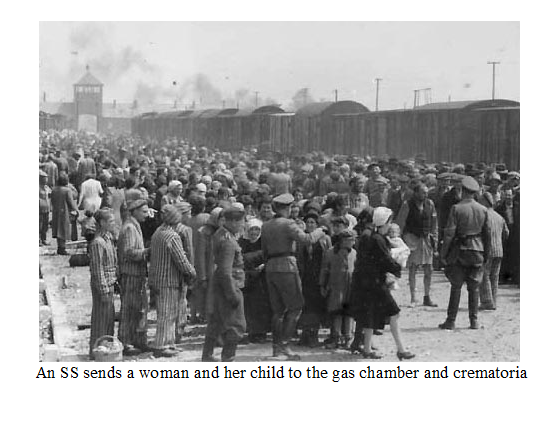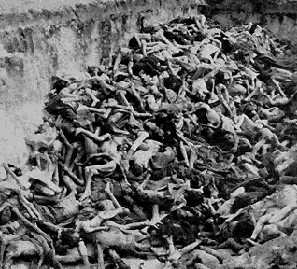Scientology Roots – Chapter Six – The Great Evil of Religions
All men are brothers.
The British nobility has a secret Grand Plan to make themselves the ruthless ruler of the entire world. They want to get rid of national borders and have everyone in the world being a subject under a World Government that is controlled by them. They issue propaganda statements that are meant to manipulate people into accepting a World Government.
British propaganda says that national borders divide men off from each other and prevent men from treating each other as members of humankind.
National borders do not divide people. Those borders do not prevent the people in each country from treating each other as a brother within humankind.
False Ideas divide people, not physical boundaries
It is how people regard each other that causes them to be united or divided.
You can go from city to city, from state to state, from country to country and find yourself well treated by the people in those different locations. People are naturally inclined to get along with each other – until someone gives them an idea that creates hostility between people.
It is not simply different ideas that will cause hostility. Christians can retain high regard for people who are not Christians and vice versa. When someone introduces an idea that people of one faith should mistreat people of a different faith, that is when you get hostile attitudes and hostile actions between people.
That is what to be alert to – watch out for the guy who seeks to introduce ideas that will split decent people into hostile factions – wherein one set of decent people attacks some other set of decent people who do not deserve to be attacked and mistreated.
Members of Family A are living in peace, and members of Family B are living in peace.
Family A – decent people
Family B – decent people
The members of these families have no inclination to go cause harm to each other.
How is that a member of Family A then goes over and kills the entire Family B?
First Evil Man wants to be the ruthless ruler of the entire world.
So, Evil Man hires Psycho Man to carry out his evil agenda.
Psycho Man forces a member from Family A into the armed services where he is now made to go kill the men, women and children within Family B, who do not deserve to die.
It is classic behavior modification –
1. Removal of your personality
2. Installing the new personality
Enter the Soul-Suckers
Where Evil Man Hires Psycho Man…
The people in Germany should have refused to fight for this evil agenda. The same applies to people in any country who tells its citizens to go kill for some evil agenda.
National borders did not cause this split in humanity.
A false evil IDEA was used to cause this split in humanity.
The evil IDEA was that certain people were superior and certain people were inferior. The inferior were people with non-white skins, or were Jewish, or were stupid, or were lazy, etc.
Adolf Hitler… wrote:
“I have the right to exterminate millions of individuals of inferior races, which multiply like vermin.”
It is no less evil when religions introduce false ideas like that.
The Great Evil of Religions
Various religions introduce false ideas that people of a different religion are evil.
They will also call for vicious and destructive actions to be taken against them.
Here are some examples of this type of thinking –
Book of Leviticus, Chapter 25 –
Both thy bondmen, and thy bond maid's, which thou shalt have, shall be of the heathen that are round about you; of them shall ye buy bondmen and bond maid's. Moreover of the children of the strangers that do sojourn among you, of them shall ye buy, and of their families that are with you, which they begat in your land: and they shall be your possession. And ye shall take them as an inheritance for your children after you, to inherit them for a possession; they shall be your bondmen forever: but over your brethern the children of Israel, ye shall not rule one over another with rigor.
So, there you have religious scripture telling Jews to make slaves out of non-Jews.
Book of Exodus –
He that sacrificeth unto any god, save unto the Lord only, he shall be utterly destroyed.
Book of Leviticus –
And he that blasphemeth the name of the Lord, he shall surely be put to death.
Book of John 15:6 –
If a man abide not in me, he is cast forth as a branch, and is withered; and men gather them, and cast them into the fire, and they are burned.
In 1184 the Roman Catholic Church created the Holy Office of Inquisition into Heretical Wickedness.
The Catholic priests tortured and burned heretics – anyone who held a different belief than the Catholic Bible.
Torture was used to get the confession, then the heretic was burned at the stake in the public square.
Other torture devices were used that were equally cruel. After confessing, the accused heretic was taken before the Inquisitors to be pronounced guilty and burned at the stake.
The Italian astronomer, Galileo, was called before the Inquisitors for heresy. Galileo said that the Sun is stationary and the earth’s rotation gives the impression of the sun in motion across the sky. The Bible says the Earth is stationary and the sun moves.
- Psalm 93:1 states that “the world is firmly established, it cannot be moved.”
- Ecclesiastes 1:5 states “the sun rises and the sun sets, and hurries back to where it rises.”
Galileo was imprisoned for life for making a statement that contradicted the Catholic Bible. But he told the truth, the Catholics preferred the lie.
Such is the work of the high priests of sacred fabrication and falsity, called holy scripture. Their method of operation is – accept the lies or be tortured and die.
* * *
The Catholics have scripture for a practice called Marinatha. It is viciously attacking the non-believer with the intent to “destroy him utterly”. These attacks include financial, familial, physical, and mental attacks on the person. It is not just something they did in the past, they still practice it now in our current times.
Scientology is one of those religions calling for maximum harm against non-adherents. It is their policy to completely destroy anyone who is critical of Scientology.
* * *
Freedom of religion is the right to believe it.
Freedom of religion is the also the right to not believe it.
The decent people of any religion should demand the removal of all scripture that says adherents to a different religion are evil. They should also demand removal of all scripture calling for abuse against people who are not adherents of their religion.
All such scripture is itself evil and constitutes behavior modification because without such ideas the decent members of any church would have no inclination to attack the people who do not belong to their church and faith.
Let’s take another look at Family A and Family B.
Family A – decent people
Family B – decent people
Family A and Family B belong to different religions. Does that make them evil?
Definitely not.
Should they be harmed just because they have a different religion than yours?
Definitely not.
All men are brothers
And they have a natural inclination to be friendly with and to assist each other.
Live by that correct idea
.
And national borders are not preventing anyone from living by that correct idea.
next















